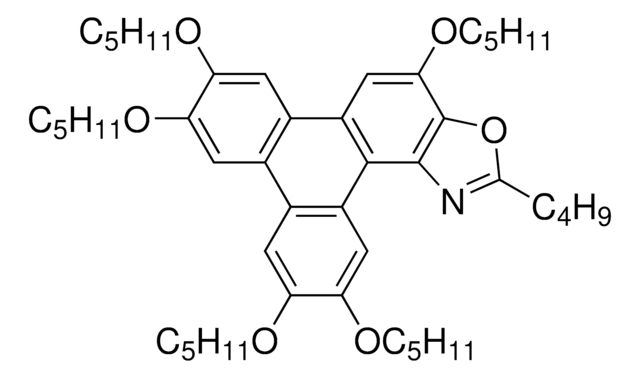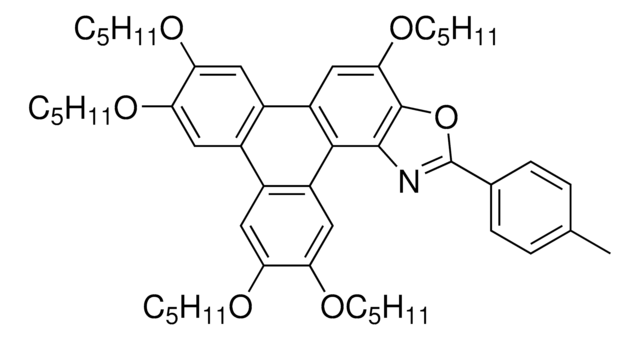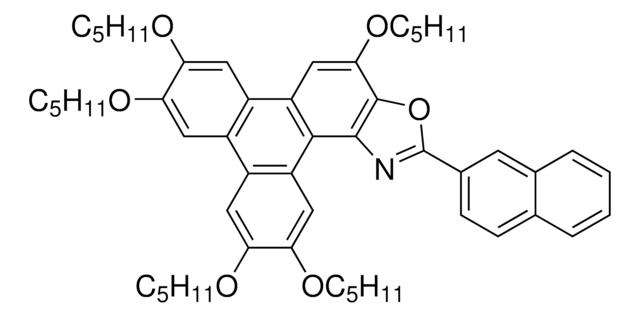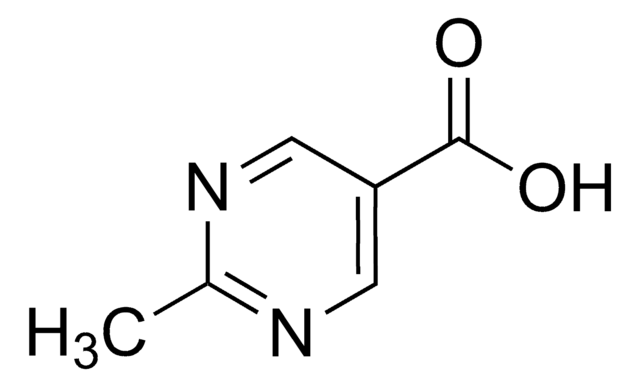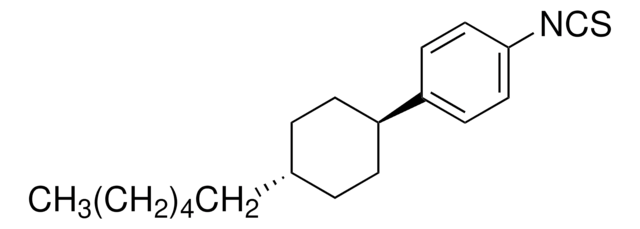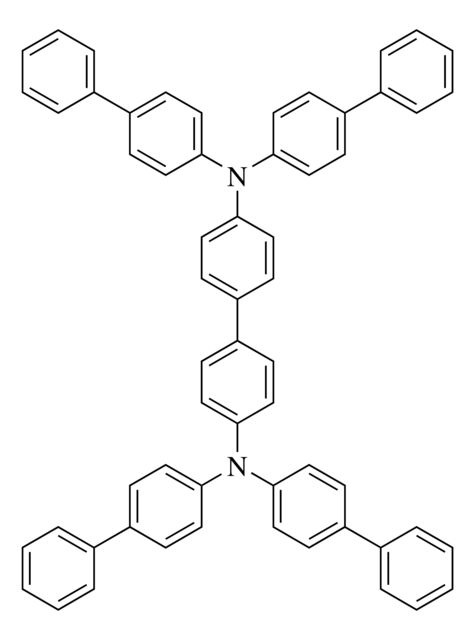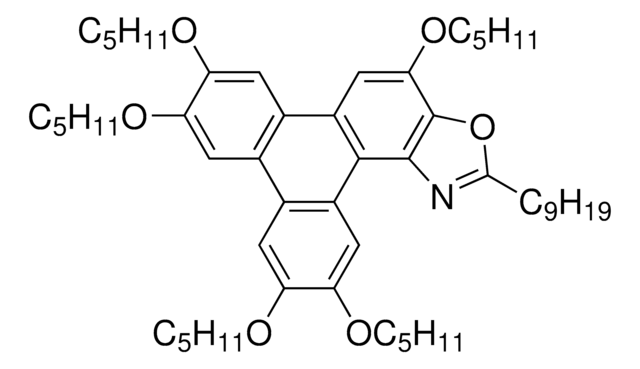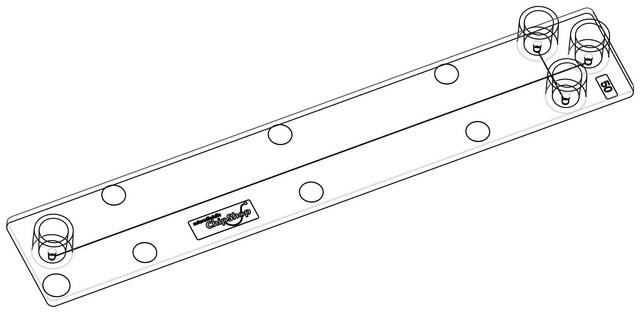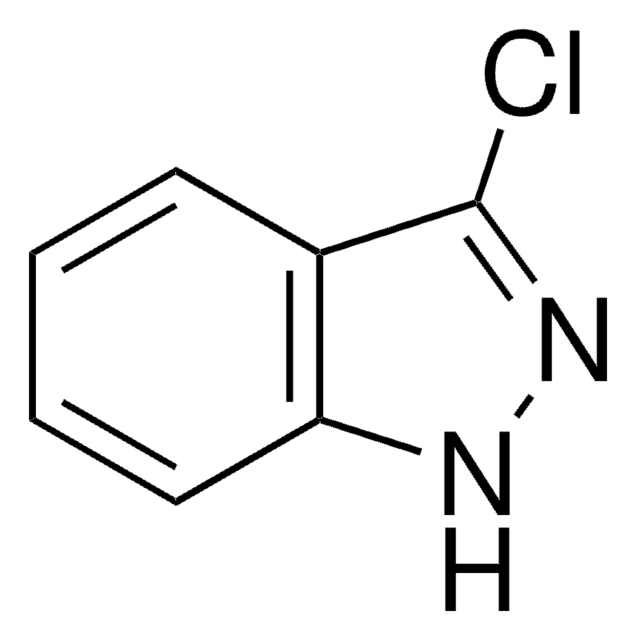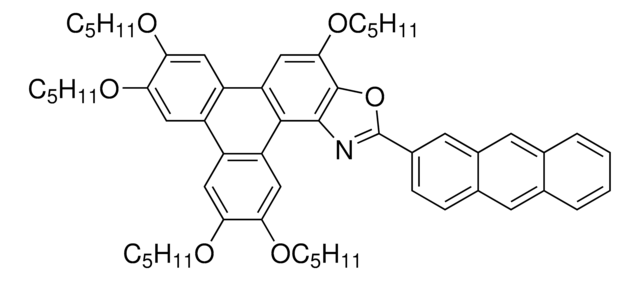923036
TpOx-p-BiPh
Sinónimos:
8-([1,1′-Biphenyl]-4-yl)-2,3,6,11,12-pentakis(pentyloxy)triphenyleno[1,2-d]oxazole
Iniciar sesiónpara Ver la Fijación de precios por contrato y de la organización
About This Item
Fórmula empírica (notación de Hill):
C56H69NO6
Número de CAS:
Peso molecular:
852.15
Número MDL:
Código UNSPSC:
12352200
NACRES:
NA.23
Productos recomendados
temp. de almacenamiento
−20°C
Nivel de calidad
Descripción general
TpOx-p-BiPh is a UV excitable fluorescent material with a polycyclic aromatic donor-acceptor structure where the triphenoxazole core acts as a donor and the aromatic group on the two position of the oxazole (4-phenyl-phenyl) act as the acceptor group. The push-pull, donor-acceptor, structure facilitates intramolecular charge transfer in the excited state that results in a 220 nm emission Stokes Shift. This oxazole is also a photo-conducting Discotic Liquid Crystalline (DLC) material with mesophase transition onset temperature of 123 °C. It is designed for 355 nm and 405 nm excitation with emission at 490 nm with quantum yield of 0.61, high thermal, chemical and photostability. This luminescent compound has potential uses in fluorescent dye staining, organic electronic and photonics, and imaging applications.
Aplicación
Fluorescent materials have a range of unique properties that allows for potential use in a range of applications:
- Fluorescent dye staining
- Organic semiconductor for organic electronic and photonic applications
- Multi-photon microscopy
Almacenamiento y estabilidad
Store under nitrogen in the dark in the freezer (below 8 Celsius).
Código de clase de almacenamiento
11 - Combustible Solids
Clase de riesgo para el agua (WGK)
WGK 3
Elija entre una de las versiones más recientes:
Certificados de análisis (COA)
Lot/Batch Number
It looks like we've run into a problem, but you can still download Certificates of Analysis from our Documentos section.
Si necesita más asistencia, póngase en contacto con Atención al cliente
¿Ya tiene este producto?
Encuentre la documentación para los productos que ha comprado recientemente en la Biblioteca de documentos.
Nuestro equipo de científicos tiene experiencia en todas las áreas de investigación: Ciencias de la vida, Ciencia de los materiales, Síntesis química, Cromatografía, Analítica y muchas otras.
Póngase en contacto con el Servicio técnico